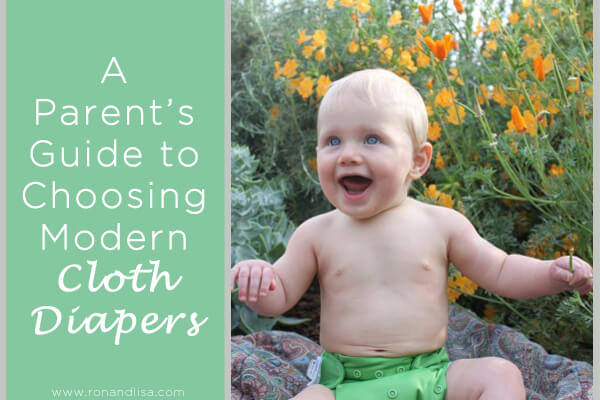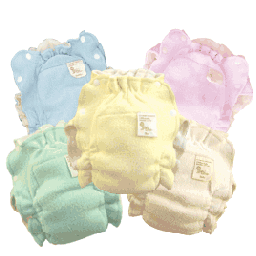
Let’s start with the basics – Why use cloth diapers?
- Better for Baby: Disposable diapers contain dioxin, a highly-toxic carcinogen and Tibutyl-tin (TBT), a toxic pollutant and hormonal disruptor. Disposables are so absorbent because they contain sodium polyacrylate, which was used in tampons until the early 1980’s when it was linked to toxic shock syndrome. If you’ve ever changed a baby’s disposable diaper and noticed little blue beads of gel on their bottom, that was sodium polyacrylate. Since skin is your baby’s largest organ, it goes without saying you’d rather not cover it in toxic chemicals like these.
- Better for the Planet: All those chemicals that don’t absorb into your baby’s bloodstream will be dumped into a landfill and eventually reach your water source when using disposable diapers. The same is true for the feces, which is meant to be dumped in the toilet even when using disposables, but almost never is. We can’t know for sure, but the estimate is that a single-use diaper takes between 250-500 years to decompose, and more than 27 billion disposable diapers are used every year in the US. And finally, over 300 pounds of wood, 50 pounds of petroleum and 20 pounds of chlorine are used to produce the disposable diapers ONE baby needs for ONE YEAR.
- Better for Your Pocketbook: The savings you will get out of cloth diapering vary depending on which type of diapers you use and the capacity and efficiency of your washing system. But overall, you can spend between $2000-3000 to put disposable diapers on a baby from newborn to potty-learning (depending on the brand you buy). Your costs for a babyhood of cloth will range from around $300 for the most economical system to about $700 for a premium system (and those numbers include water and energy costs). So even if we round that premium system up to $1000, you’re saving at least $1000 per child. Add to THAT the fact that you can reuse those diapers for your next child, and your savings simply multiply.
And Just Plain Cute: Okay, this one is not as compelling as the others. But there’s no denying that a poofy, cloth-clad booty is far cuter than its crinkly, paper-clad equivalent. Are there really no pins required? Different types of cloth diapers today.
- Pockets and Inserts: (brands include bumGenius, Rumparooz, and Happy Heinys) are a popular choice for convenience. A pocket diaper must be stuffed with the inserts of your choice, but requires no additional cover and keeps the moisture away from your baby’s skin.
- All-in-Ones: (brands include bumGenius Organic and Bottom Bumpers) include the waterproof outer and absorbent inner in one simple diaper that requires no assembly. They are the most like disposable diapers when it comes to putting them on the baby. On the downside, they can take a long time to dry.
- Hybrid diapers: (brands include Softbums and GroVia) include an insert that lays against the baby’s skin and it’s changed with every diaper change and a reusable waterproof cover that is used more than once throughout the day. These are a favorite among new parents interested in cloth diapering.
And finally prefolds and fitteds are the most economical system. A prefold or fitted is placed on the baby and then enclosed with a waterproof cover.
How many do I need?
Newborn baby needs 10-12 cloth diapers per day and when they hit around 5-6 months of age, baby needs just 6-8 diapers per day. Most parents prefer to wash cloth diapers every other day and it’s a good idea to have some extras, so simply double the amount of cloth diapers needed per day and add a handful more to have on hand when washing your diapers.
It is really that easy?
Yes, it really is. Most parents are drawn to one type of cloth diaper more than the other, once they read about each type (ie pocket vs. all-in-one). And usually that’s the type that ends up being the best choice for their baby. The time consuming part of cloth diapering for today’s parents is the choosing. But the using of cloth diapers is not only easy, but also rewarding for the parent, the baby and the planet. Giselle Baturay is the owner of Granola Babies in Orange County, CA. She’s a Green Baby Educator, Certified Lactation Educator, Attachment Parenting International Leader and organizer of the upcoming guide, The EcoBaby Guide: Pregnancy & Beyond. For years, she’s taught parents the importance of raising babies naturally and is thrilled to continue this outreach with ongoing events at the Granola Babies store. Giselle is a mother of three cloth diapered babies.



